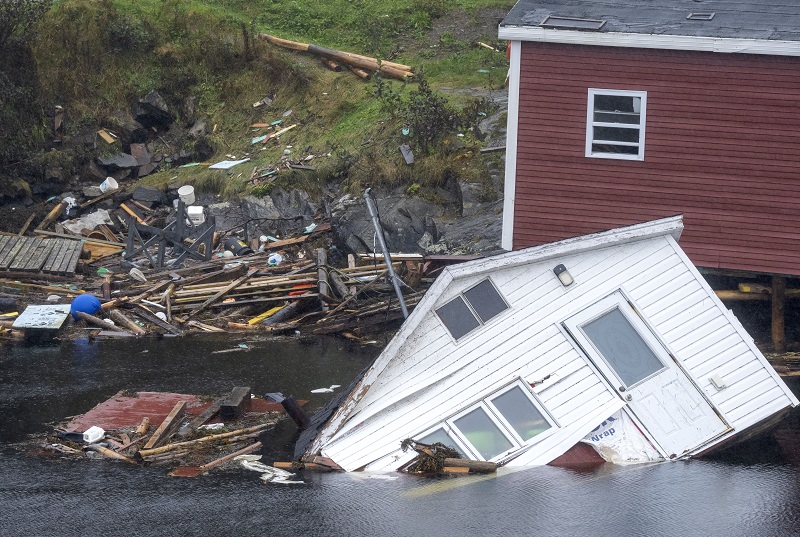
Hurricane Fiona insurance damage estimate revised to $800 million
January 5, 2023 by David Gambrill

Print this page Share
Hurricane Fiona has now caused insured damage of more than $800 million in Canada, according to Catastrophe Indices and Quantification Inc. (CatIQ).
CatIQ’s initial estimate in October 2022 was $660 million.
Hurricane Fiona now sits as the seventh-largest catastrophe in Canada’s history in terms of insured damages, up from the tenth-largest, as previously reported. It remains the costliest extreme weather event ever recorded in Atlantic Canada. (At $4 billion in insured damage, the 2016 Fort McMurray wildfire ranks the worst catastrophe in Canadian history.)
Hurricane Fiona first made landfall in Atlantic Canada on Sept. 24, 2022, with maximum wind gusts exceeding 100 km/h in Atlantic Canada and Eastern Quebec. Damage included a tragic loss of life as well as torrential rainfall, large waves, storm surges, downed trees and widespread power outages.
A release from Insurance Bureau of Canada (IBC) Thursday indicates the majority of the increase in insured damages is due to personal property claims. “However, many affected residents were located in high-risk flood areas and flood plains where residential flood insurance coverage is generally not available.”
Damage estimates in these high-risk areas are not included in the total of insured damages, IBC observes. “As a result, it is expected that the cost to all orders of government from these events will total well into the billions of dollars once infrastructure and disaster financial assistance to uninsured residents are tallied.”
It is “clear that a good deal of costs for this disaster will be borne by government,” said Amanda Dean, IBC’s vice president of Atlantic Canada with IBC.
“As we continue to see the increasing impacts of climate change, it’s clear much more must be done to enhance our resilience to these risks and build a culture of preparedness,” Dean said. “This includes investments in new infrastructure to reduce the impact of floods and fires on communities, as well as retrofit programs that focus on resilience, improved building codes, better land-use planning and, increasingly, the creation of incentives to shift the development of homes and businesses away from areas of highest risk.”
Insurance claims arising from severe weather have more than quadrupled over the past 15 years, as IBC notes. “The new normal for yearly insured catastrophic losses in Canada is $2 billion – most of this due to water-related damage. In comparison, in the 15 years from 1983 and 2008, Canadian insurers paid out an average of about $422 million a year in losses related to severe weather.”
Feature image: Buildings sit in the water along the shore following hurricane Fiona in Rose Blanche-Harbour Le Cou, Newfoundland on Tuesday September 27, 2022. Fiona left a trail of destruction across much of Atlantic Canada, stretching from Nova Scotia’s eastern mainland to Cape Breton, Prince Edward Island and southwestern Newfoundland. THE CANADIAN PRESS/Frank Gunn